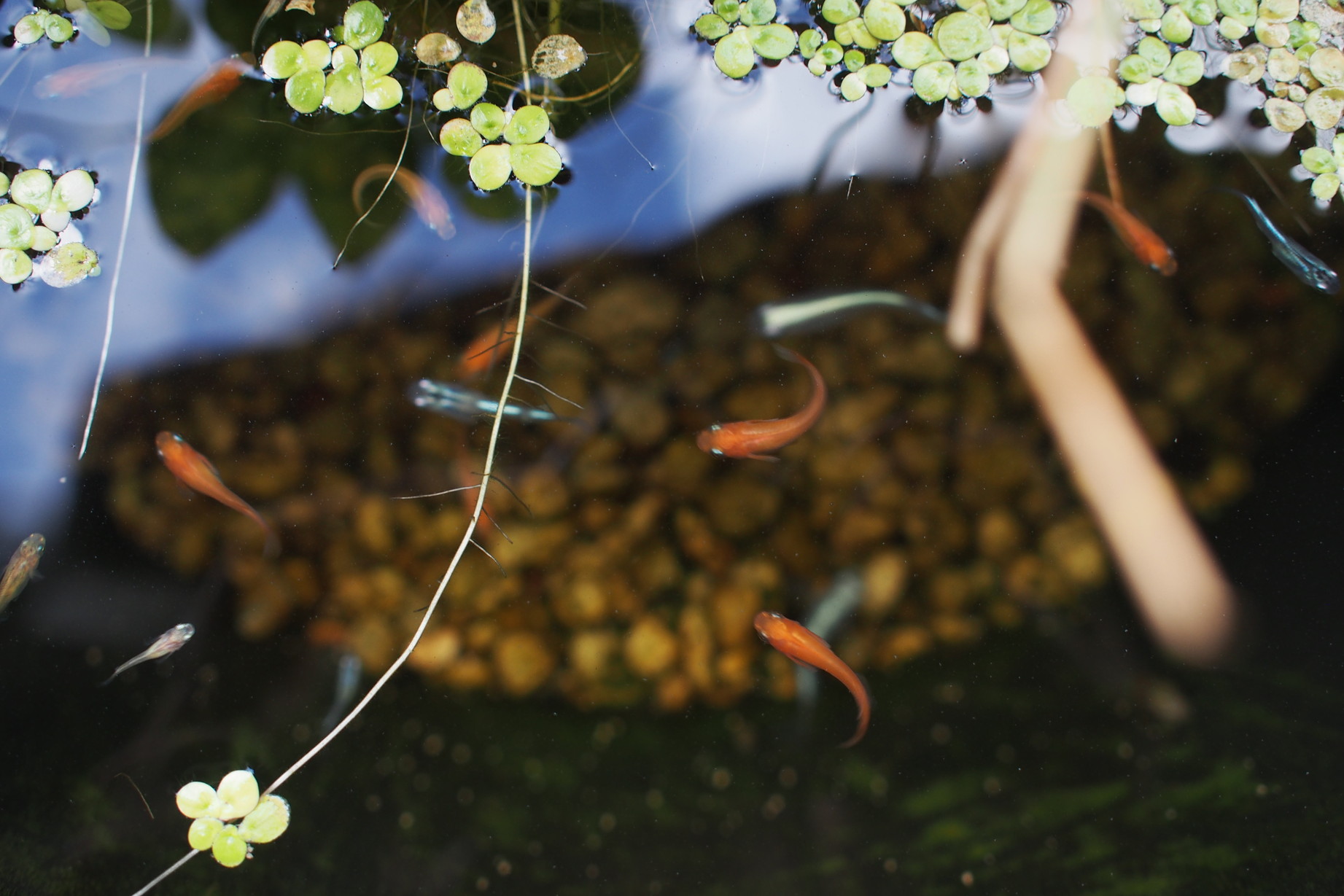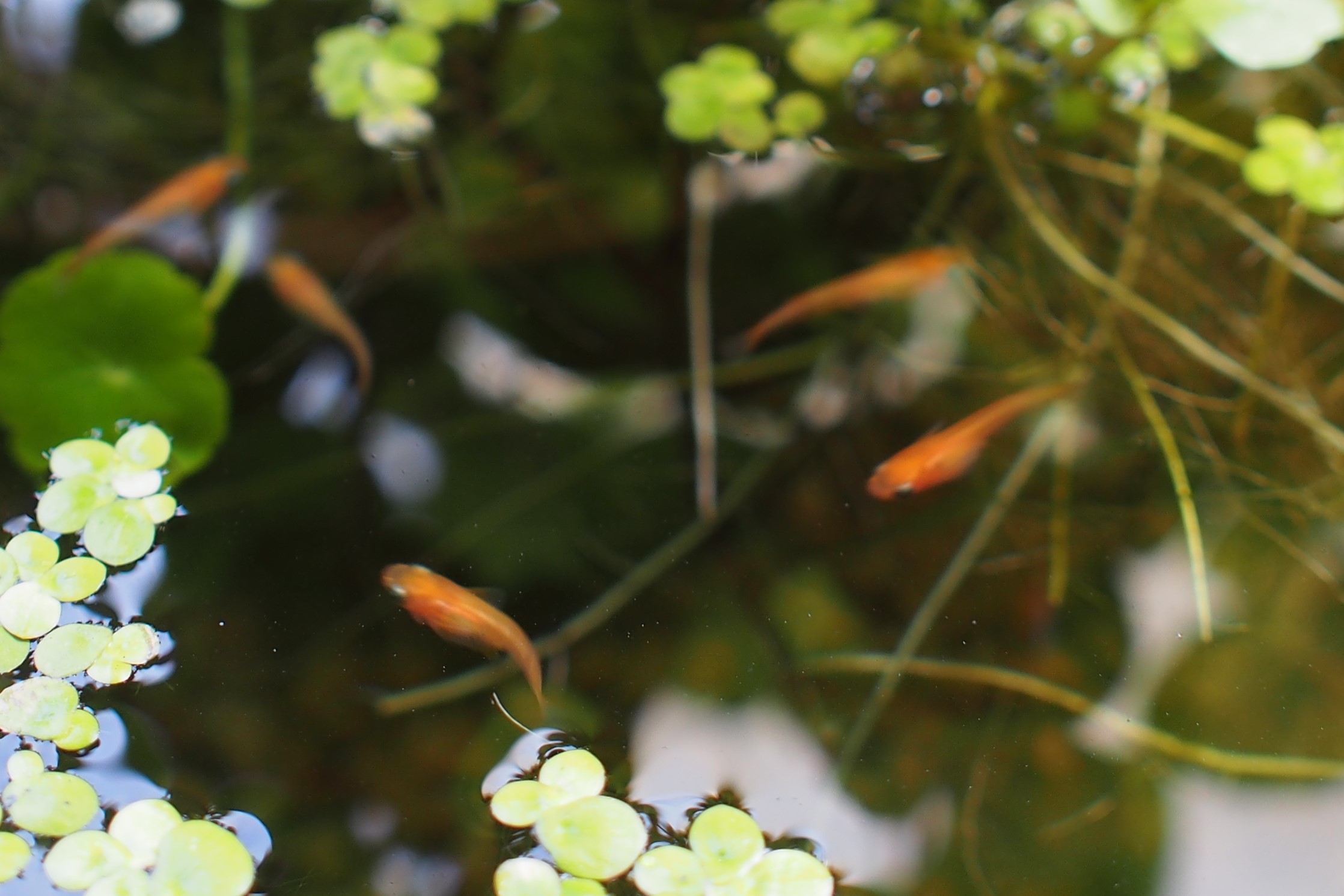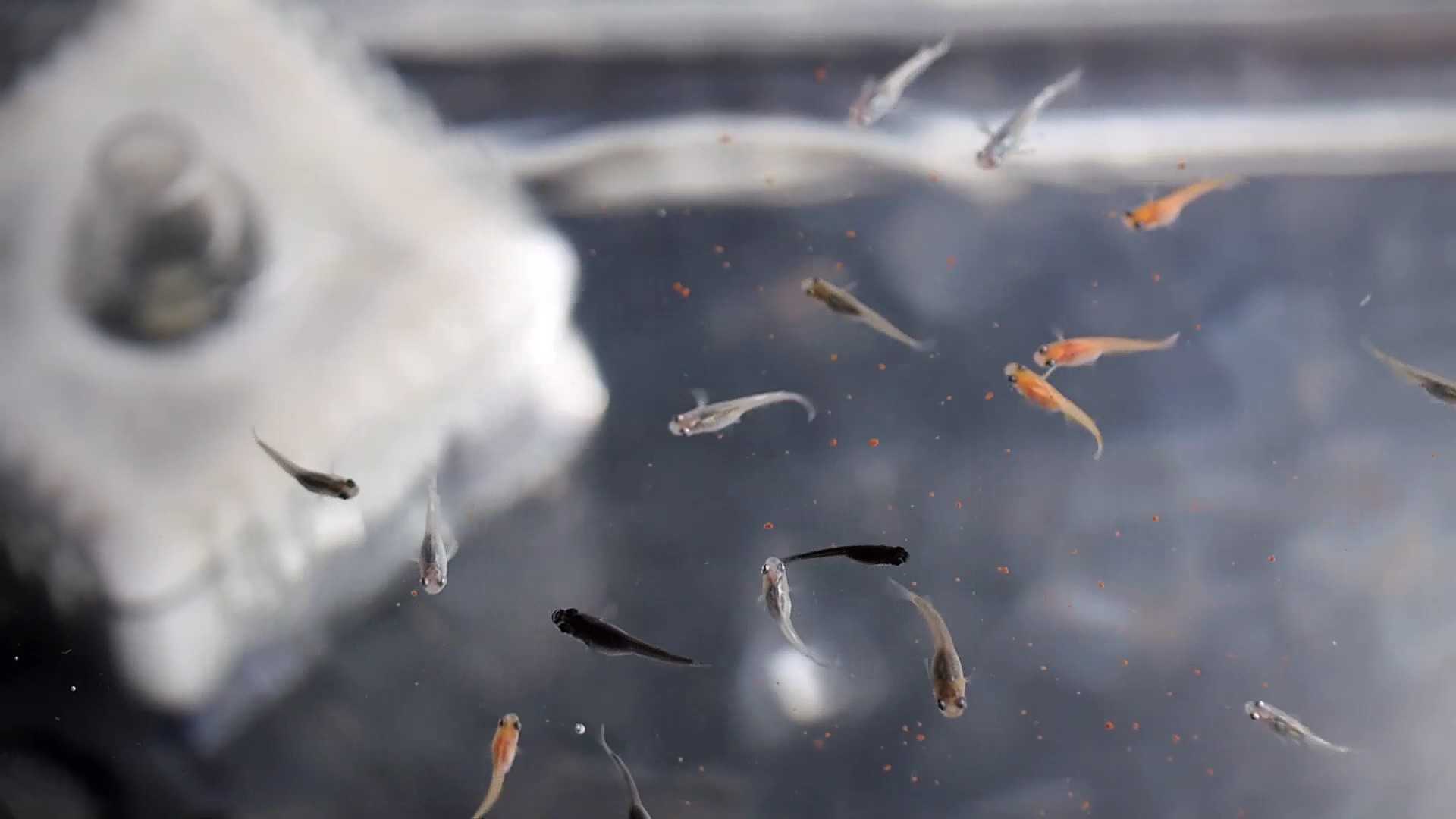- 1 Medaka keeping is easy even for kids once you get the hang of it!
- 2 What you need to keep killifish
- 3 How to distinguish between male and female killifish
- 4 Preparations for getting killifish
- 5 How much and how often to feed
- 6 How often do you change the water?
- 7 How to breed killifish and raise fry
- 8 Related Articles
Medaka keeping is easy even for kids once you get the hang of it!
Medaka are probably the easiest type of fish to keep at home. * However, extreme breeds of killifish are often genetically weak due to inbreeding and other factors, so care must be taken when introducing them. <span
Even elementary school children can easily keep killifish with the right knowledge. The author first started keeping killifish in about the third grade of elementary school. My parents did not know how to keep killifish, so I remember reading books and researching on my own.
If you are keeping killifish for the first time, it is a good idea to choose inexpensive individuals ranging in price from tens to hundreds of yen per fish because you may fail to keep or introduce them and let them die.
What you need to keep killifish
Aquarium or pot
When keeping killifish, they can be kept indoors or outdoors. For indoor keeping, an aquarium or plastic case will be the main container, and for outdoor keeping, a pot or planter will be the main container.
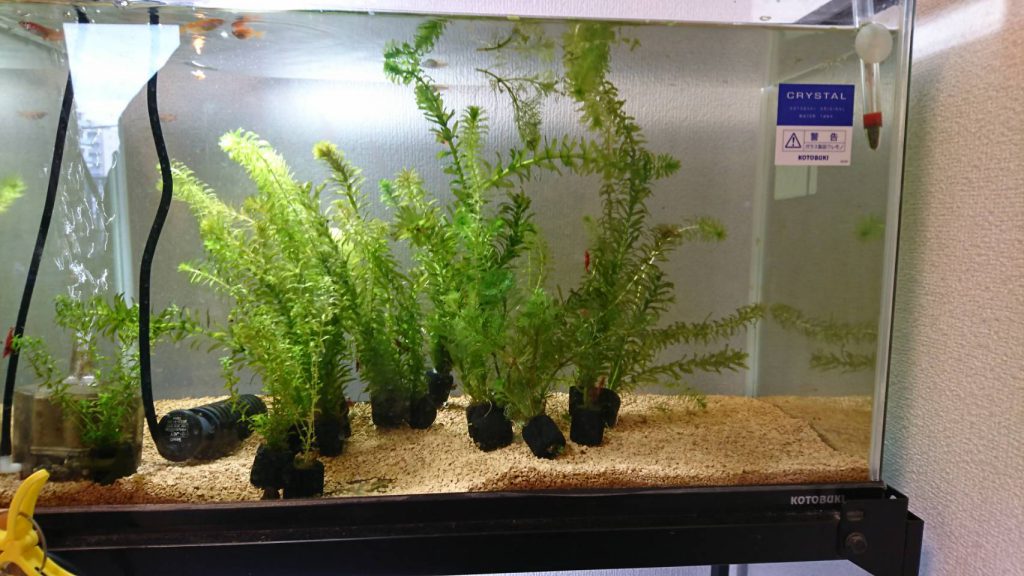
The easiest way to view fish is in an indoor aquarium. As one would expect from an aquarium that exists solely for the purpose of viewing fish, it is perfectly clear and easy to use.
You can also see how the killifish are doing by observing them from the side, so you can check for changes in water quality, spawning, courtship behavior, etc.
The disadvantage of aquariums is that they need to be maintained because of the moss that grows on them.
You do not need a glass or acrylic aquarium like those used to keep tropical fish to keep killifish. We also use tool boxes called NF boxes or NV boxes sold at home improvement stores. They are inexpensive, sturdy, and we like them very much.
As long as the water does not leak, any container will do. In extreme cases, even something like a plastic bag will do.
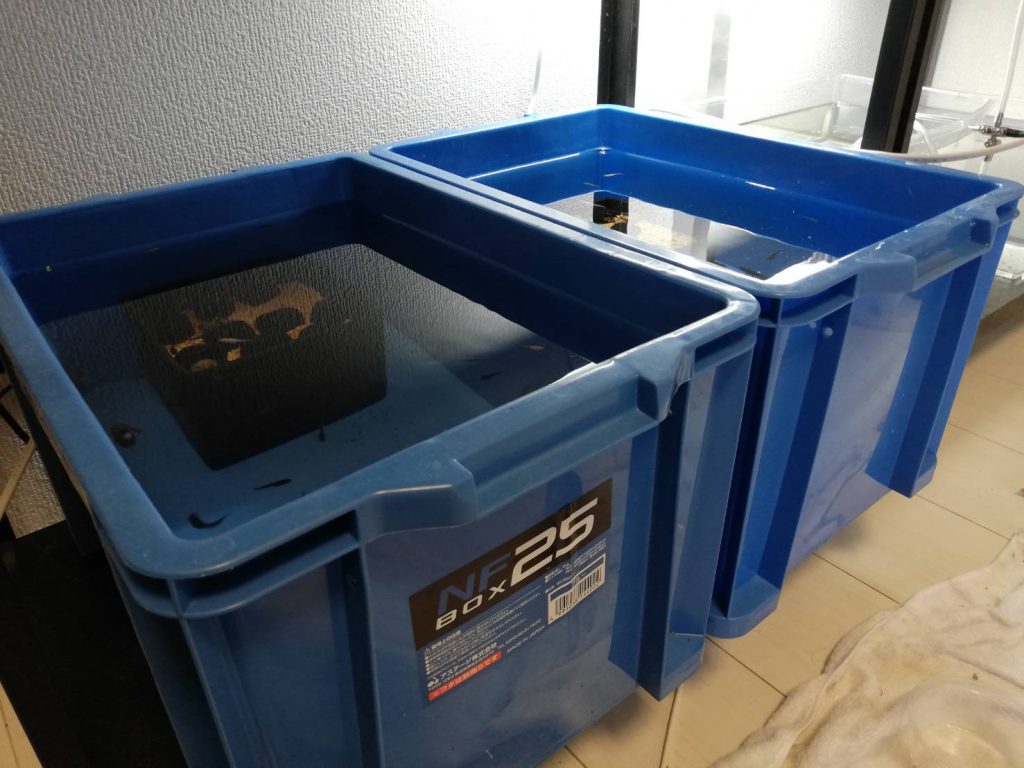
Drain the water
Tap water may contain chlorine, which is harmful to killifish. There are two types of chlorine removers: solid (hypo) and liquid. You can choose the one you prefer. Recently, even 100 yen stores such as Daiso sell liquid type chlorine removers.
It is easy to spend a lot of money on aquarium and killifish when you start to get into it. It is also recommended that you keep the prices low except for killifish, aquatic plants, and other aquatic organisms.
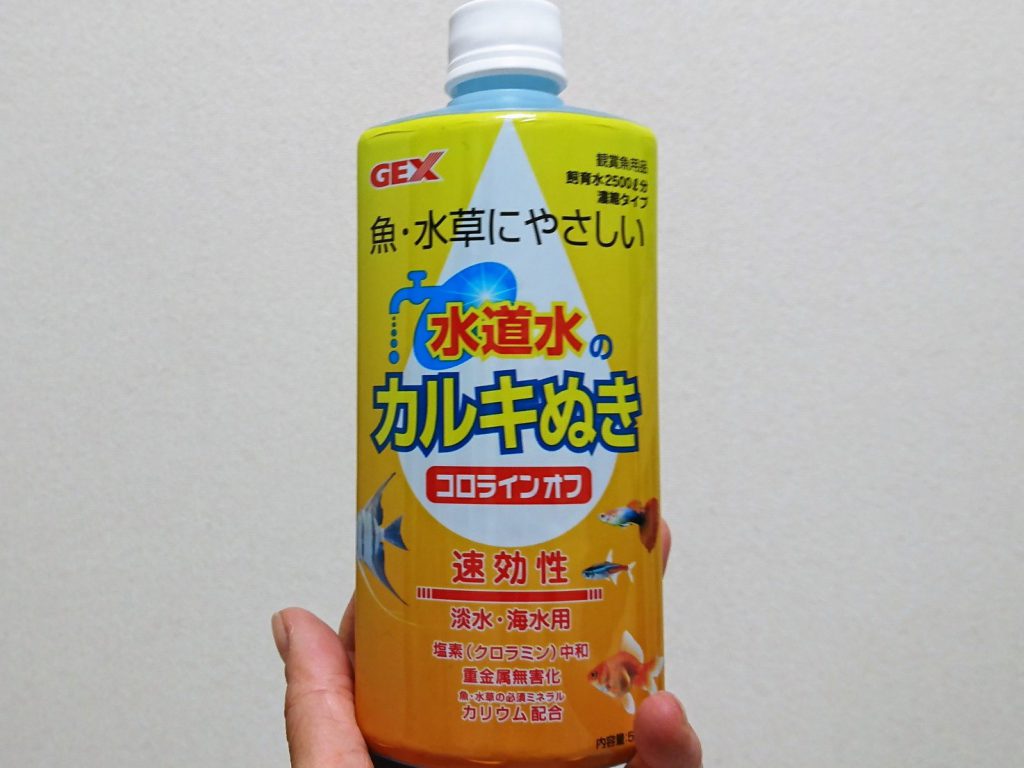
Liquid types are sold at home centers, pet stores, and aquarium stores for a few hundred yen. Tetra’s Contra-Color line is a well-known example. You can also pump it into a bucket and expose it to sunlight for a day to get the same effect as removing calcium from the water.
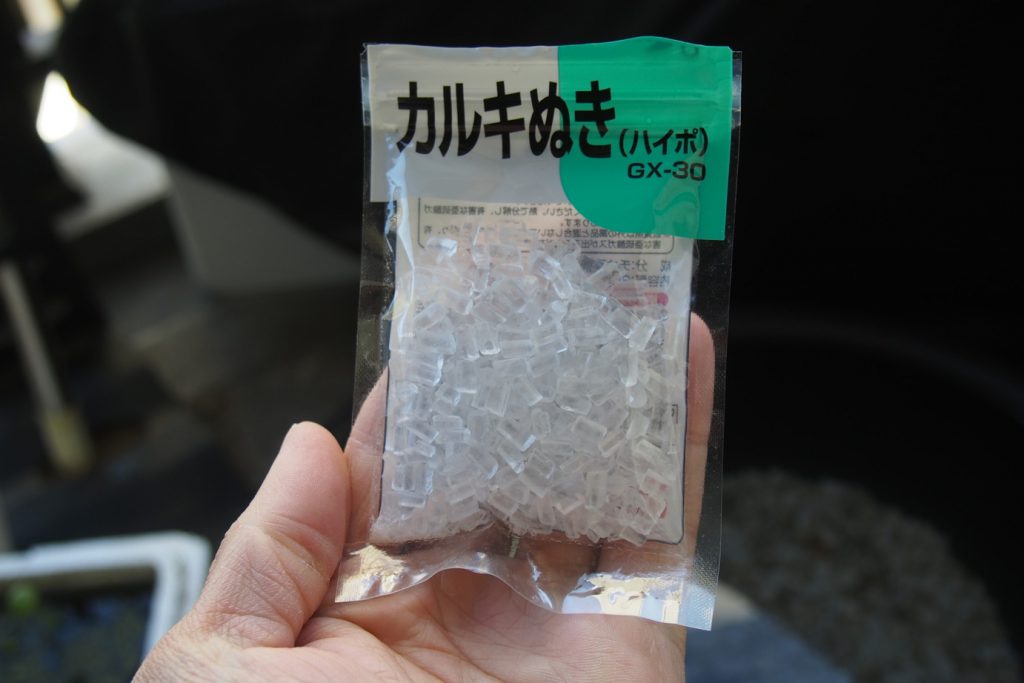
We use a solid type calcium fluoride remover. The biggest reason is that it is cheaper. It is very economical because it can neutralize several times as much as the liquid type.
Some of the other reasons are: “It is troublesome to close the lid of the liquid type calcium bromide remover” and “I don’t want the liquid to stick to my fingers or clothes when I spill or throw it in the water. This is a matter of personal preference, so it is best to use what is easy to use.
See also this article about dealkalization.
Medaka Food
Medaka need food, of course, to live a healthy life. In the midst of this killifish boom, where breeding has progressed and colorful killifish are being produced, it is not uncommon to find expensive food, costing close to 1,000 yen per bag, on sale at aquarium stores.
However, if you are keeping healthy varieties of killifish such as Japanese killifish and wild killifish at home, expensive food is not necessary. It is possible to keep killifish at a very low cost.
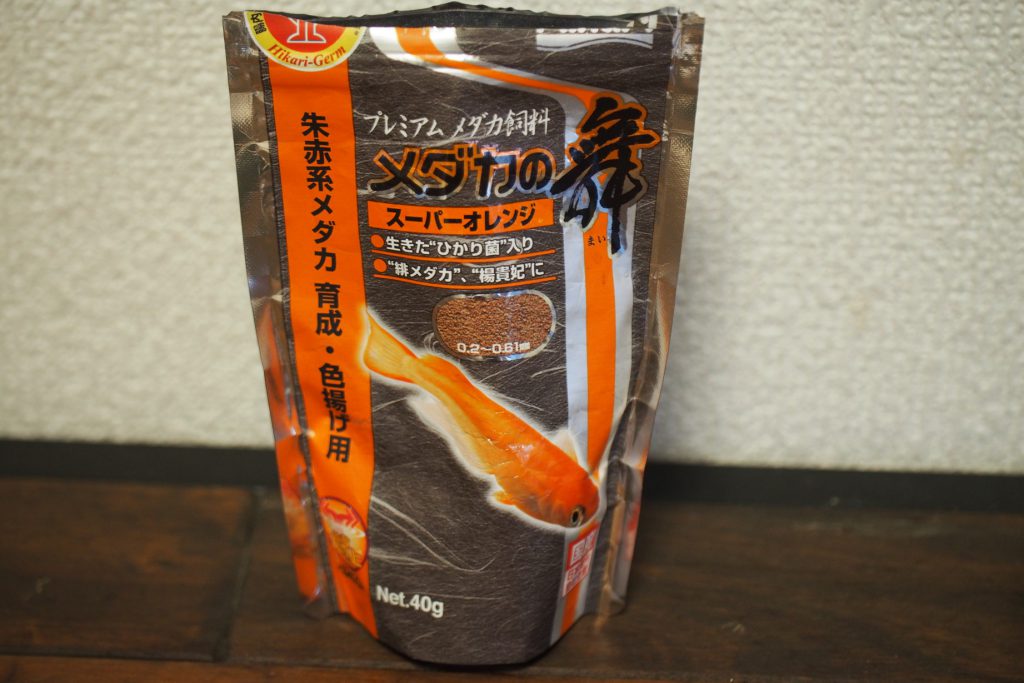
We recommend the Kyorin “Medaka no Mai” series. It is very easy to use because it has high floatability and you can choose the size of the grains. We use “Medaka no Mai Super Orange” and “Medaka no Mai Next”.
Gravel
Gravel should be laid down as much as possible. It not only makes it easier to view, but also stabilizes the water quality by allowing microorganisms such as filtration bacteria to live in the uneven surfaces of the gravel.
Bacteria such as filtration bacteria convert ammonia, a toxic substance generated from organic matter such as leftover food, dead leaves from aquatic plants, and feces discharged by killifish, into nitrate, which is less toxic.
Many people on the Internet seem to use red-bean soil, but we do not recommend it for first-time killifish keepers because it makes the water quite muddy and is difficult to maintain. In our aquarium, we use “Roka Jari” by Kotobuki Kougei.
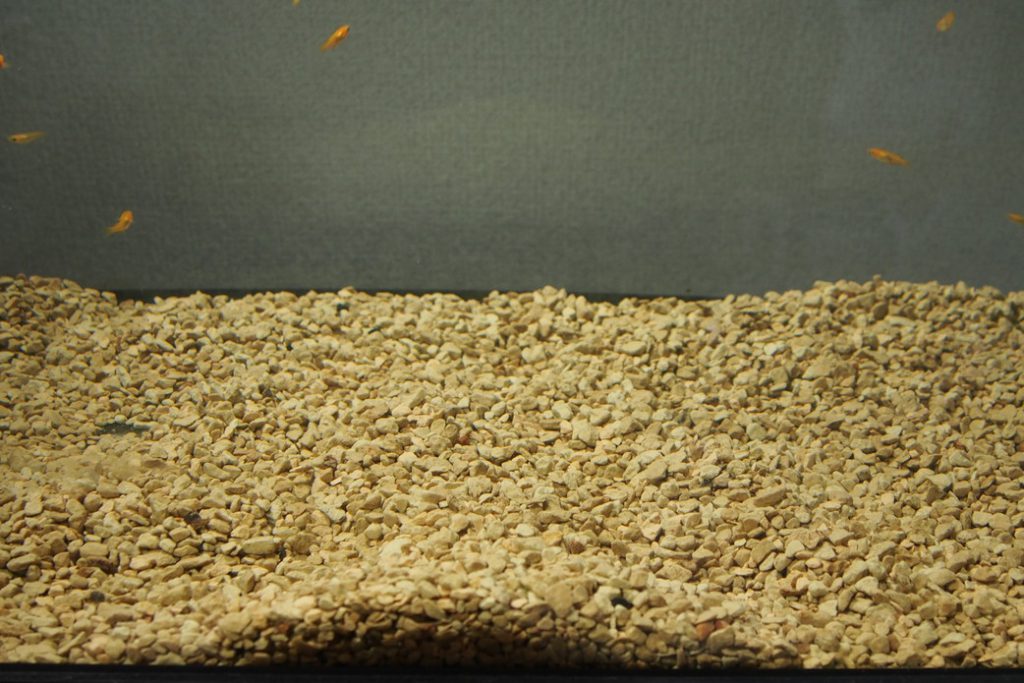
Do I need a filter/filter?
Depending on the number of killifish and the size of the container, a filter or filtering unit may not necessarily be necessary.
There are two main functions of a filter/filter One is to supply oxygen to the breeding water and the other is to filter the water.
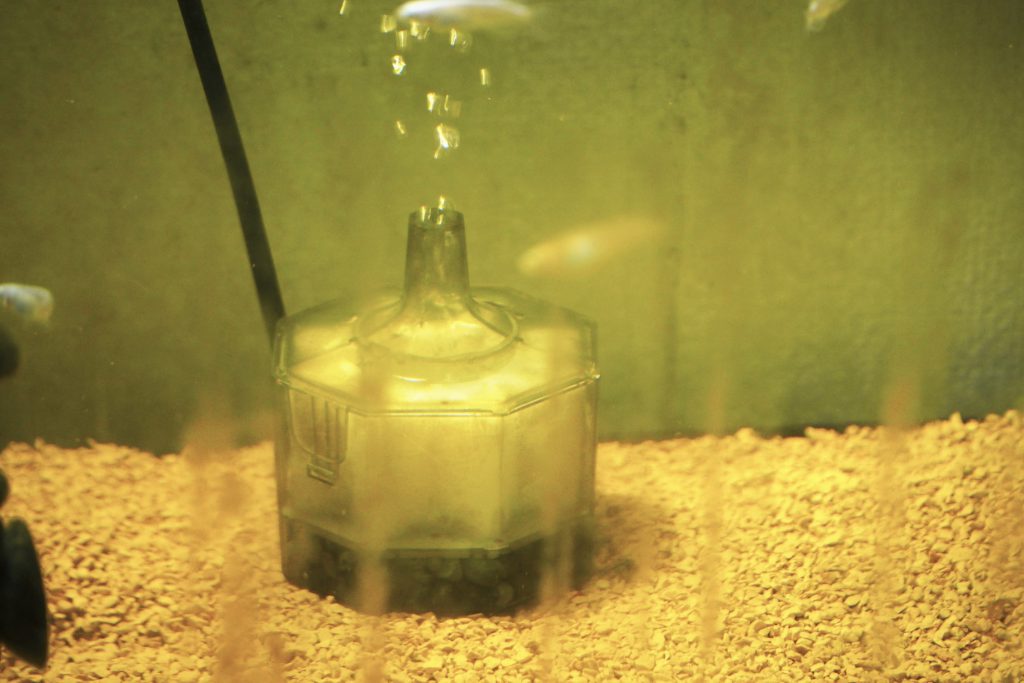
A filter is an essential piece of equipment in aquaria such as tropical fish, but killifish are basically very hardy creatures. If kept in small numbers in a large container, a filter is not necessary. In fact, if you use a filter with a high water flow rate, such as an external filter in a small aquarium, the fry may become weak.
Of course, regular water changes are a prerequisite, but as a general guideline, a filter is not necessary if the ratio of adult fish per liter of water is about one fish per liter of water. If the aquarium is more overcrowded than that, a filter will probably be necessary.
How to distinguish between male and female killifish
Breeding is one of the pleasures of keeping killifish. You may have several killifish in your house, but none of them are laying eggs! It is important to be able to tell the difference between male and female killifish.
Male killifish characteristics
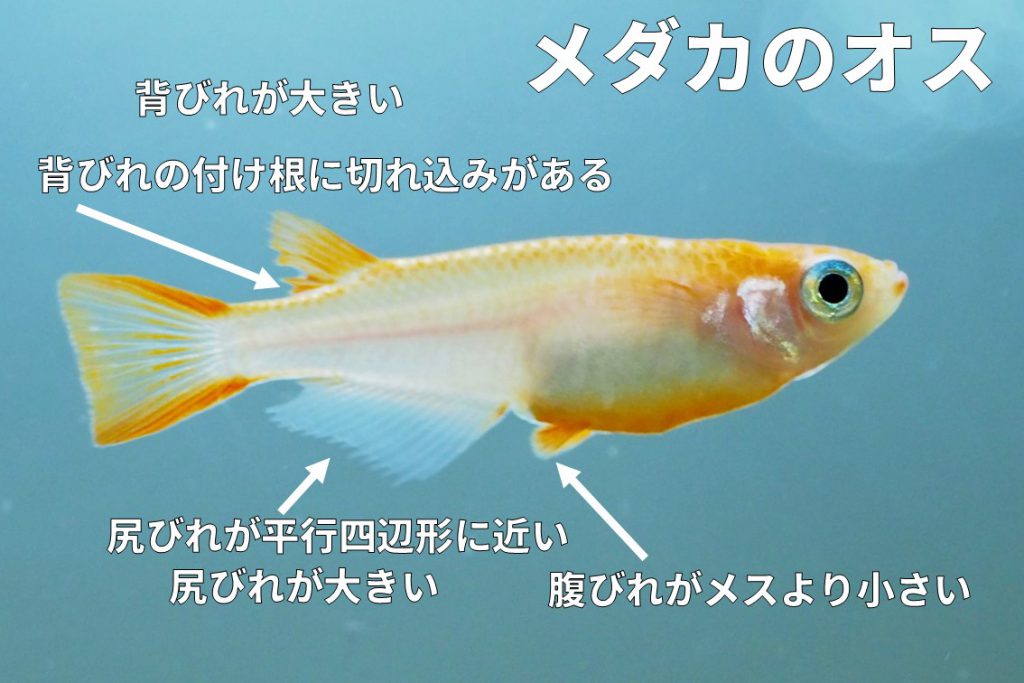
- The dorsal fin is large
- Cut or cleft at the base of the dorsal fin
- Rump fin close to a parallelogram
- Bigger butt fins
- Smaller ventral fins than females
Female killifish characteristics
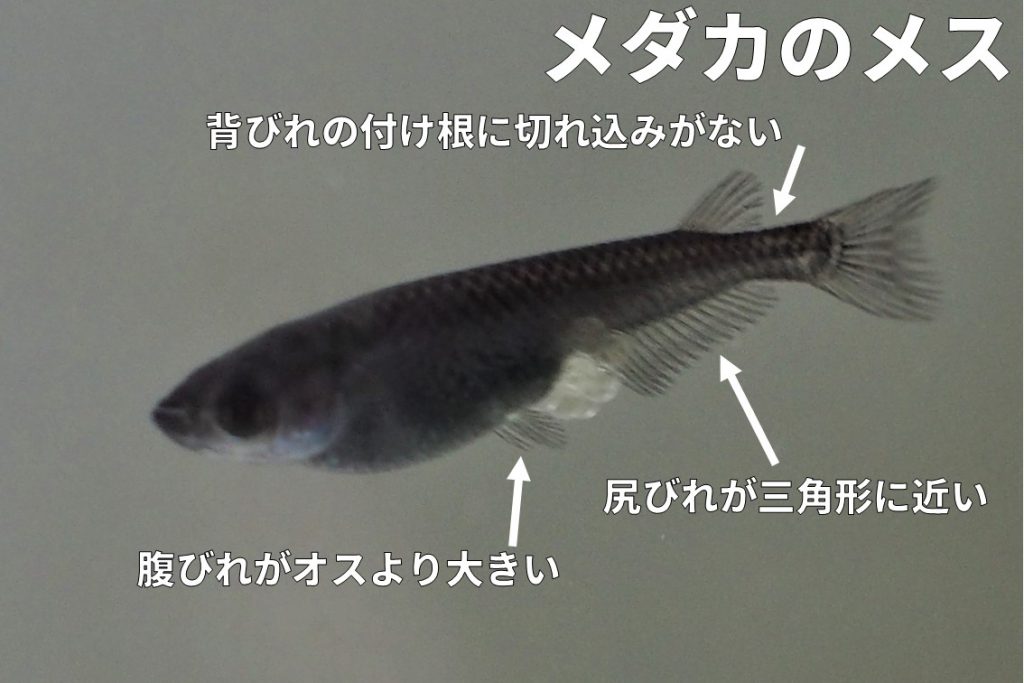
- No cut or tear at the base of the dorsal fin
- Ventral fin larger than in males
- Rump fins nearly triangular
Purchasing from a malicious store may result in only males
When you buy killifish from a malicious online store, you will often hear that all the killifish are males! This is often the case. For those who aim to breed killifish, females that lay eggs tend to be seen as more valuable. Make sure to buy from a reputable store. I once bought 20 killifish and found that there were 16 males and 4 females.
Preparations for getting killifish
Preparation is also necessary before keeping killifish. Make sure you have a healthy medaka to welcome them into your home.
Let’s set up the aquarium
First, let’s set up the all-important aquarium. Fill the tank or pot with tap water that has been pumped or de-calcified.
Gravel is quite difficult to wash
Gravel should also be washed thoroughly. The water will inevitably become muddy immediately after adding gravel, so if possible, prepare the gravel a day or so before welcoming killifish into the aquarium.
Water adjustment
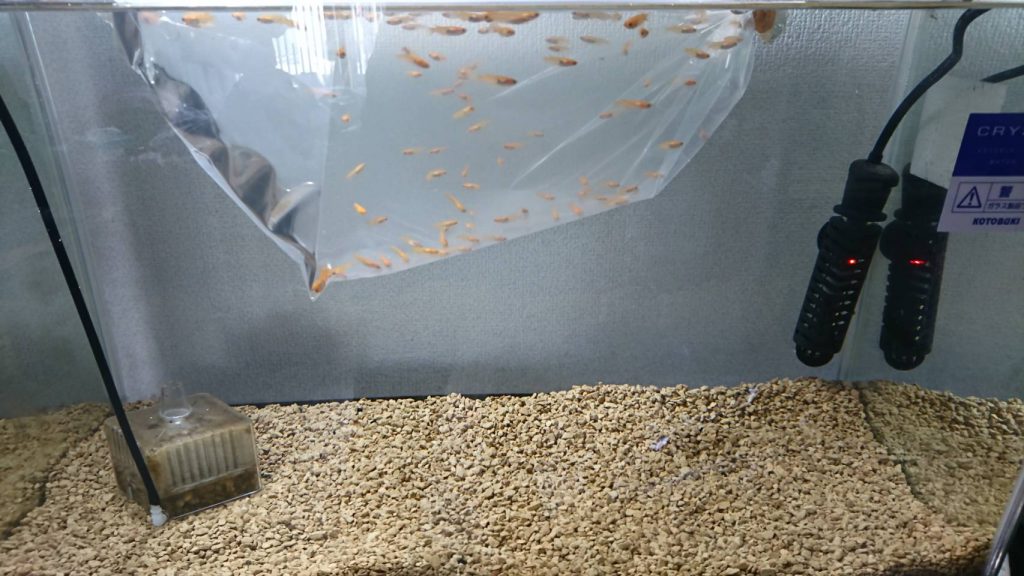
Temperature matching
The water temperature of the water in the bag you bought and the water in which you will keep the fish is unexpectedly different. To prevent temperature shock, float the aquarium for 20 to 30 minutes in the tank where you plan to keep the fish.
Adjustment of water quality
In a small container such as a glass, pour water from the aquarium into the bag a little at a time to acclimate the killifish to the quality of the water. Finish the water adjustment by adding the killifish and the water in the bag together. Although it may not be necessary to be this nervous when keeping killifish, be aware that many of the recently improved killifish are quite sensitive to water quality.
How much and how often to feed
Feed less than you think
The most common pattern for beginners and children keeping killifish is to feed them too much, which quickly deteriorates the water quality and kills the killifish.
Give the amount of food that can be eaten in 2 minutes once or twice a day
The rule of thumb is to feed the killifish the amount it can eat in two minutes once or twice a day (for adult fish). For juvenile fish and fry, it is more frequent.
Less frequently in winter and on days when the water temperature is low
Unlike humans, killifish are sensitive to the temperature of the water around them. (The term “thermoregulatory animal” is used, but it is no longer used scientifically.)
) Therefore, when the temperature drops during winter, in the morning, or on days when it rains, medaka may eat very little food. ) Therefore, it is important to be careful not to overfeed them, as this can lead to leftover food and water quality deterioration.
The following is a video showing the recommended amount of food to feed the fish.
How often do you change the water?
The timing for water changes is simply “change the water before it becomes dirty”
Basically, water changes should be done before the water becomes dirty. When observing the water every day, you can use such indications as “a smell is coming out,” “the water may be slightly cloudy,” “the color of the water has changed slightly,” “dirt has accumulated at the bottom,” or “moss has grown a little.

Water changes should be done once~twice a week, 1/3 to 1/2 of the time
If you don’t know when to change the water, change 1/3 to 1/2 of the water once or twice a week. However, this varies greatly depending on the amount of killifish you are keeping, the season, and how you feed them. As a rough guide, if you are keeping one fish per liter of water, you should only need to change 1/3 of the volume of water once or twice a week.
During spring and summer, the killifish are very active, and the amount of food and killifish feces increases, so water changes should be done frequently.
Is it possible to make water changes unnecessary?
It is possible to make a tank or pot that can be maintained without water changes and with only additional water. You can reduce the frequency of water changes by keeping the number of killifish in the tank low, the amount of water high, and plenty of filter media and gravel to provide a home for bacteria. Our killifish biotope has been growing well without water changes for a long time.
How to breed killifish and raise fry
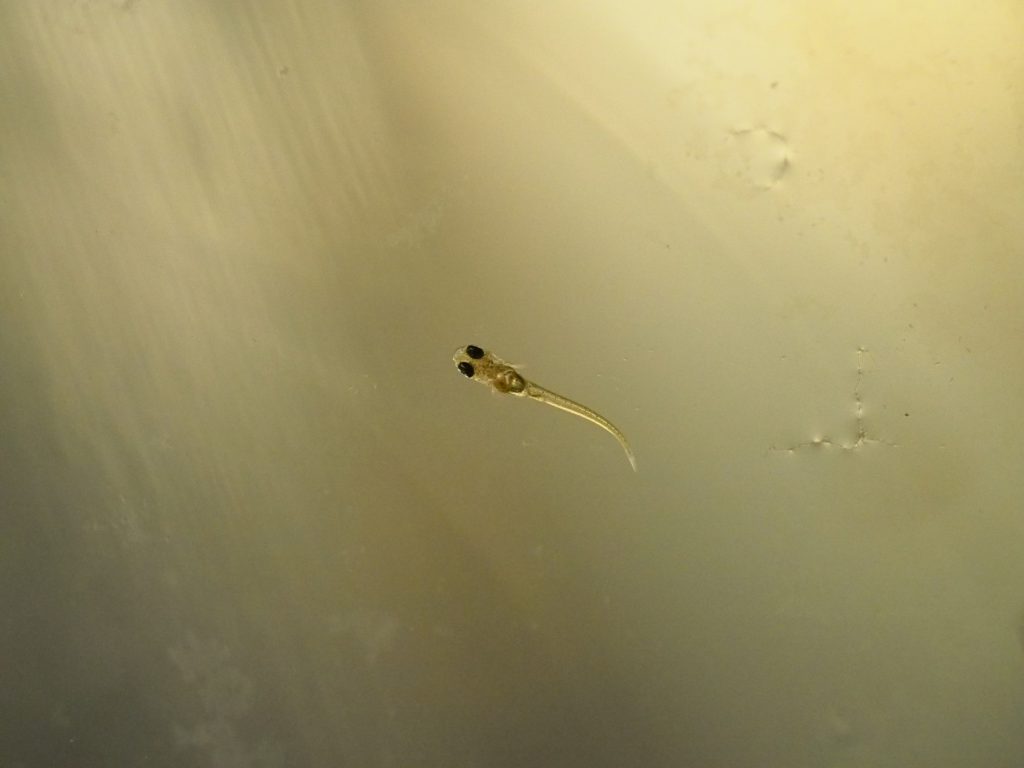
One of the most exciting aspects of killifish keeping is breeding! If you keep them well, they will lay eggs every day, so it is important to keep the next generation in good condition.
After confirming spawning, prepare a container for fry
Once you have confirmed that the female killifish is swimming with eggs attached to her belly, it is time to prepare a tank for the fry. The tank can be any container that can hold a lot of water. In our house, we use a container of about 10 liters. Because we cannot increase the number of aquariums and because it is time-consuming, we keep the fry together in the same container for about two weeks to a month after they hatch from eggs. We do not do water changes.
If the container is too small, the water quality will change quickly. A washbasin is OK, so please prepare as large a container as possible.
Medaka fry have hatched! What to feed them? How should we change the water?
Eggs of killifish are hatched after spawning.
Killifish eggs hatch approximately 7 to 14 days after spawning. The higher the water temperature, the faster the hatching. Eggs laid around October may not hatch if the water temperature is low. It may be better to install a heater.
Feed fry immediately after birth
We believe that the common saying, “You don’t have to feed them for the first few days after birth,” is incorrect. Even newborns are healthy and eat well. Here is how to feed them and what food is recommended for fry.
There are many different types of food, but you can mash up food for adult fish
Professional killifish breeders cultivate zoospores, and recently, special food for killifish fry is also available, but if you grind food for adult killifish, they will grow without problems.
The reason why they do not grow well is usually due to food or poor water quality
If your fry do not grow well or die, check the food and water quality. Are they eating the right food? If not, you will need to make the food finer. Also, fry have less developed internal organs than adults. Feed them as often as possible.
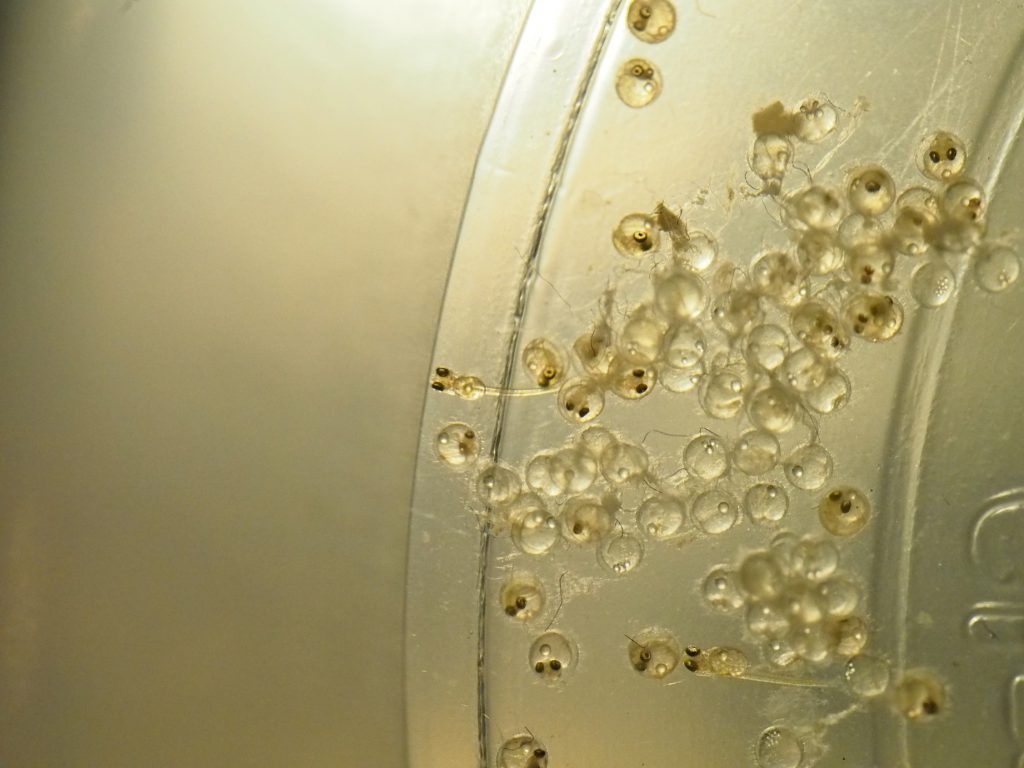
Another reason why fry do not grow and die is often water quality. It is important to identify and improve the cause of poor water quality, such as overfeeding and allowing leftover food to sink and accumulate (adult fish can eat food on the bottom, but fry only eat food on the surface)!
Related Articles
This website provides information on how to keep killifish.
Please take a look at our other articles.
Ecology and biological and morphological characteristics of medakaStandard Japanese Names: northern medaka, southern m[…]
Having trouble keeping killifish fry?[caption id="attachment_2628" align="aligncenter" width="1024"] Aim to be full of[…]
Egg-laying season for killifish in a natural environment is from May to OctoberWhen kept outdoors or without a heater,[…]
Conditions for killifish to spawnFirst, let's keep in mind the conditions for killifish to spawn.When the killifis[…]
